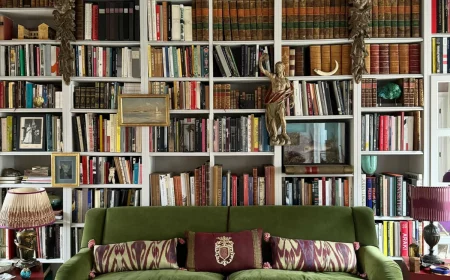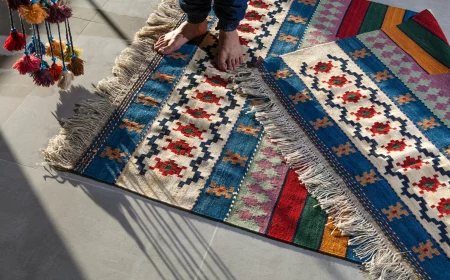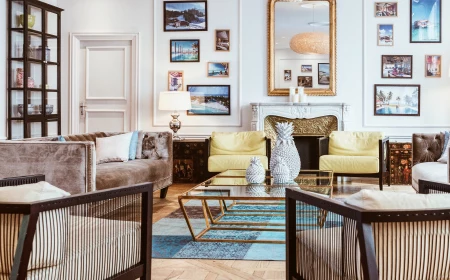Stop Decorating and Start Designing: How to Make Your Home Actually *Feel* Right
I’ve been in the home design world for a long, long time. And I mean design, not just decorating. I’ve been on-site with the builders before the first wall goes up, and I’ve helped families figure out why their living room just isn’t working anymore. After all this time, I can tell you that a truly great space isn’t about some secret formula or a trendy ‘hack.’ It’s about understanding a few core ideas that make a room not just look good, but feel good.
In this article
- 1. Function and Flow: The Stuff You Figure Out Before You Shop
- 2. Finding Your Vibe: Getting Beyond ‘Modern’ or ‘Farmhouse’
- 3. The Feel of Things: Choosing Materials That Last
- 4. Putting It All Together: Scale, Balance, and Light
- 5. The Finishing Touches: Smart, Integrated Details
- 6. The Real-World Process: How to Tackle a Room in Phases
- Inspirational Gallery with Photos
Forget the endless scroll of picture-perfect rooms online. A home that truly works for you is one that supports your daily life. It’s functional, comfortable, and a genuine reflection of who you are. This isn’t about a specific must-have chair or a viral paint color. It’s a process. So, I want to pull back the curtain and walk you through how the pros think, from the nitty-gritty of lighting to the practical needs of a real family.
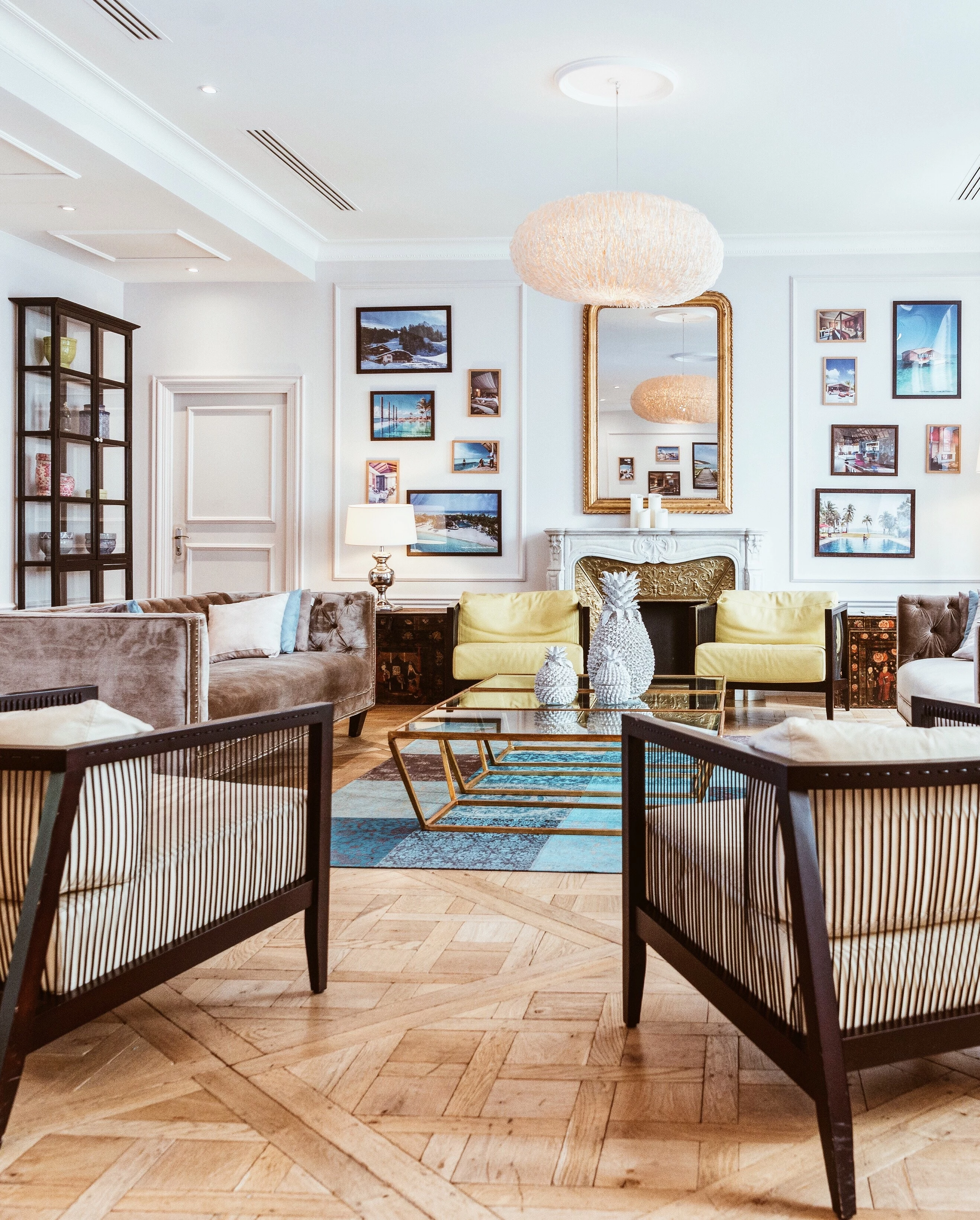
1. Function and Flow: The Stuff You Figure Out Before You Shop
Honestly, the biggest mistake I see people make is falling in love with a piece of furniture way too early. They spot the perfect sofa or a gorgeous dining table and buy it without thinking about the room itself. A professional’s first step is never about picking items; it’s about understanding how the room needs to function. This is the foundation for everything else.
Mapping Your Invisible Roads
Before a single piece of furniture is considered, I map out the traffic patterns. Think of these as the invisible highways people use to move through a room every single day. Where do you walk in? Where do you need to go from there? Is there a clear shot from the door to the couch? From the couch to the kitchen? You have to keep these lanes clear.
You need at least 30 to 36 inches for any major pathway. Any less, and the space feels clumsy and tight. We’ve all been in that house where you have to do a weird shuffle to get past the coffee table. That’s a failure of flow, plain and simple.
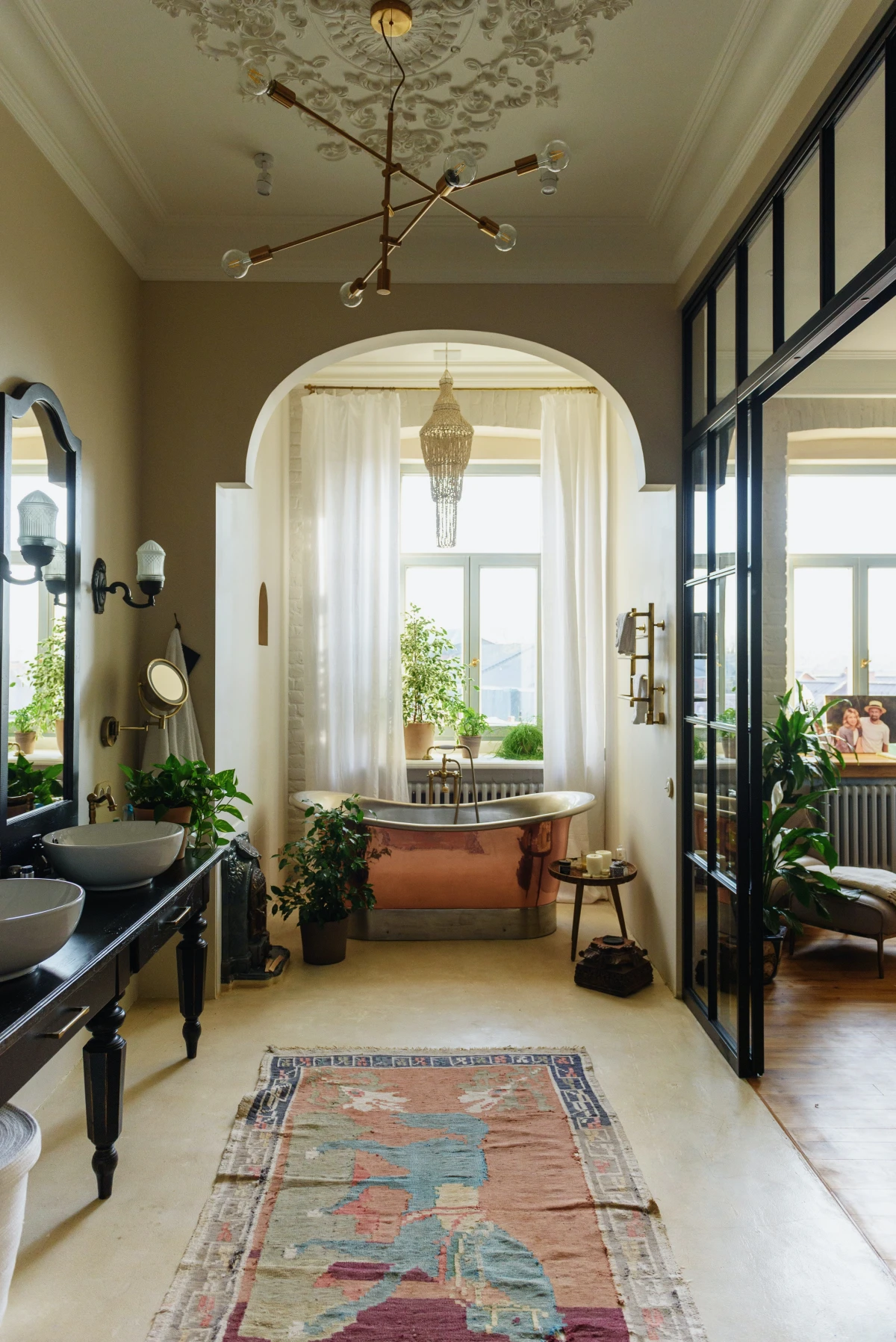
Try this right now: Go into a room in your house and physically walk your most common paths. From sitting down to getting a drink, to answering the door, to opening a window. This little exercise makes the idea of ‘flow’ super real and instantly shows you where the annoying bottlenecks are.
Let’s Talk Real Comfort (It’s Not Just About Soft Cushions)
Comfort is more than just a plush sofa; it’s about how your body fits in the space. That’s ergonomics. For instance, a standard dining table is about 28-30 inches tall. For that to work, the seat of your dining chair needs to be around 18 inches high. This leaves 10-12 inches of crucial leg room. I once saw a client pair beautiful, low-slung vintage chairs with a tall, modern table. It looked cool, but nobody could sit there comfortably for more than a few minutes. A costly mistake that basic measurements could have prevented.
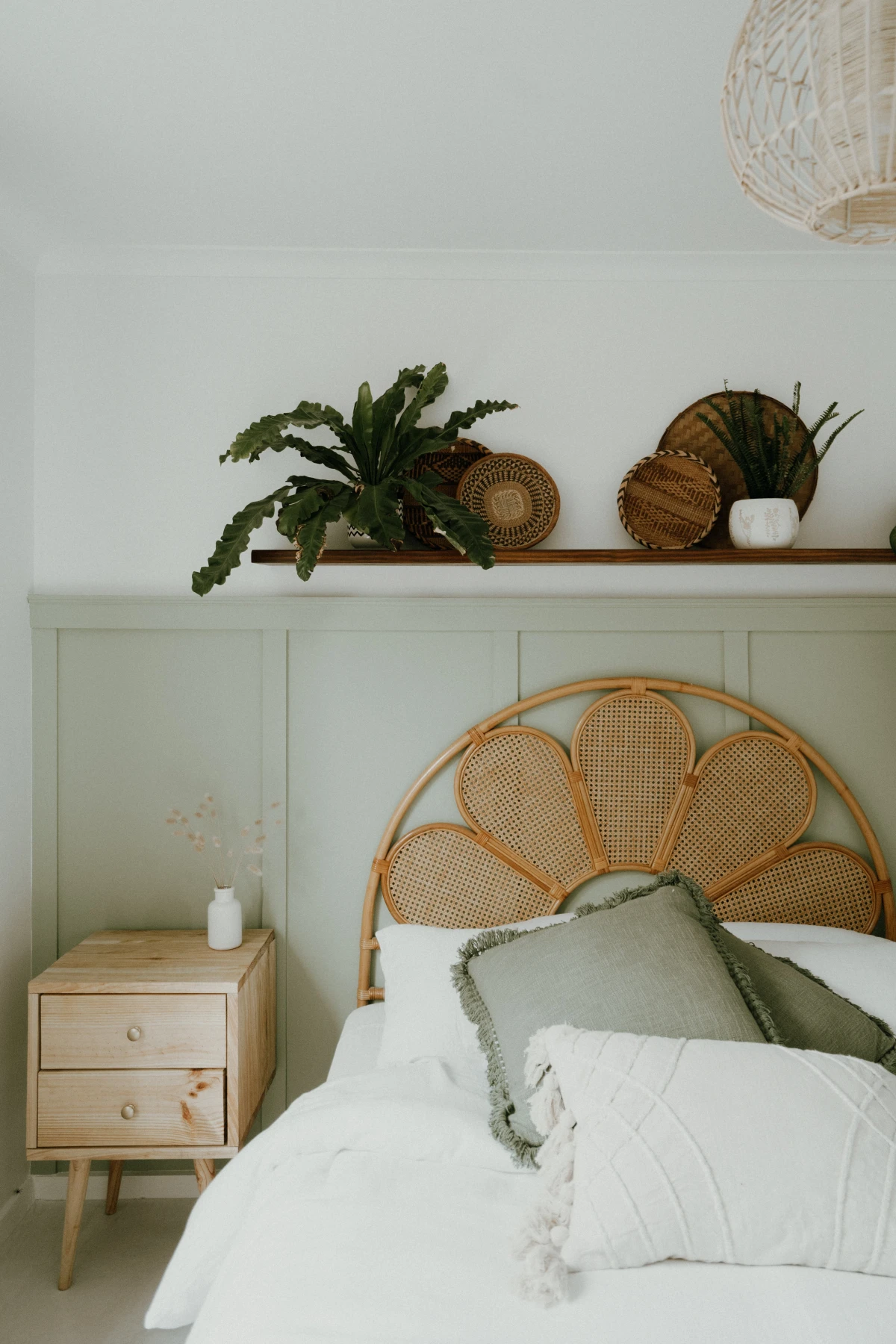
Here are a few other measurements the pros live by:
- Coffee Table to Sofa: Leave 14-18 inches between them. It’s close enough to set down your mug but leaves enough room to walk by.
- Conversation Zone: Arrange your seating so people are no more than 8 feet apart. This is the sweet spot for talking without having to raise your voice.
- Area Rug Rule: In a living room, your rug needs to be big enough for at least the front legs of your sofa and chairs to rest on it. This ties everything together. A tiny rug floating in the middle of the floor just makes a room look disjointed and small.
2. Finding Your Vibe: Getting Beyond ‘Modern’ or ‘Farmhouse’
So many people feel boxed in by style labels. My goal is never to squeeze a client into a pre-defined category. It’s about helping them figure out their own unique aesthetic. Your home should be a carefully curated collection of things you genuinely love.
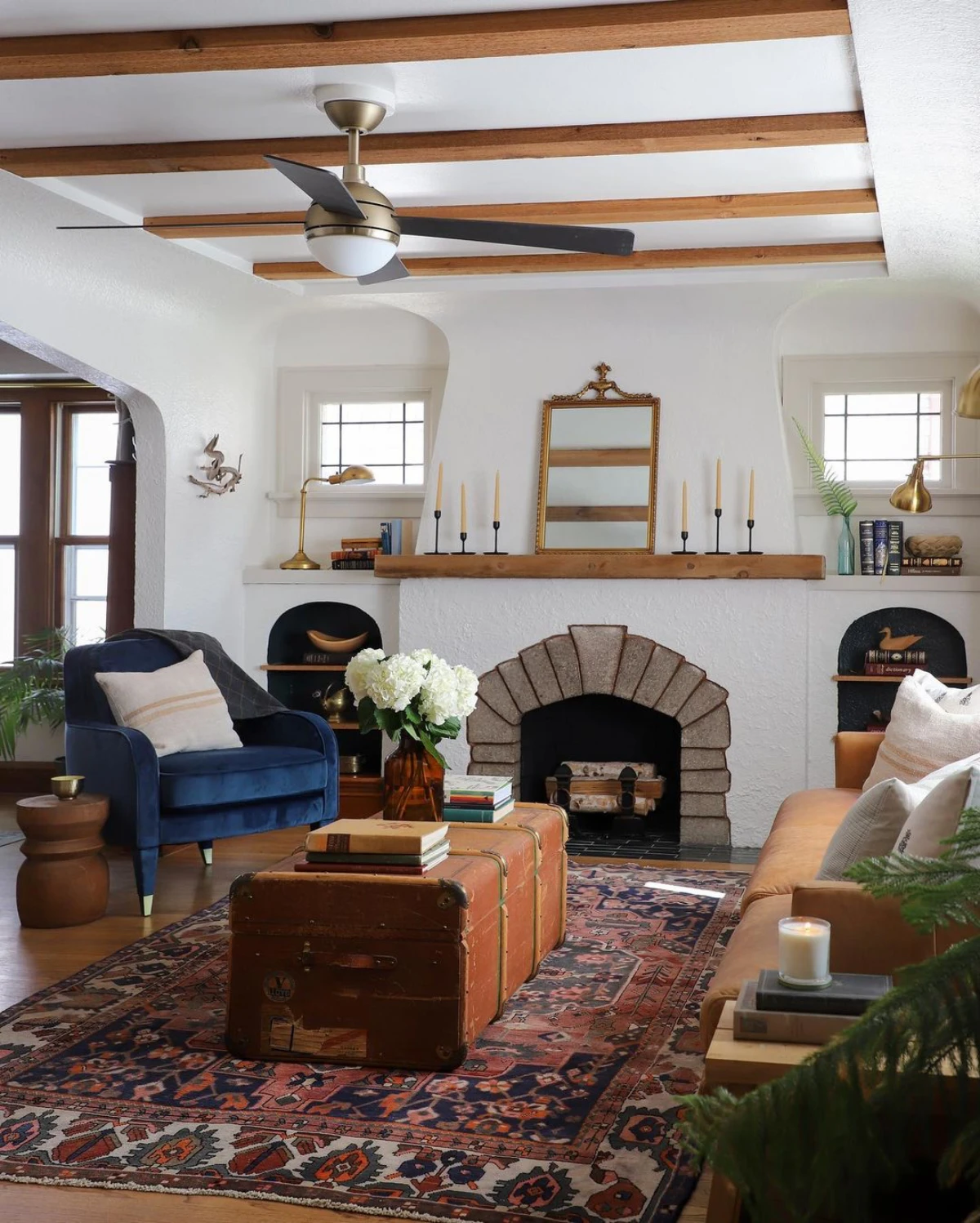
The 60-30-10 Rule for Balanced Color
This is a classic for a reason—it’s a simple, foolproof way to build a color palette that feels balanced and intentional.
- 60% is your dominant color. This is your backdrop—think wall color, a large sofa, or big area rugs.
- 30% is your secondary color. This color is there to support the main one. You’ll see it in things like accent chairs, curtains, or maybe your kitchen cabinets.
- 10% is your accent color. These are the fun little pops of personality. Think throw pillows, artwork, and little decorative pieces.
But where do you even get these colors? A great cheat sheet is to pull them from an object you already love. Find a piece of art, a rug, or even an article of clothing with a color scheme that makes you happy, and borrow its palette. It’s a fantastic starting point!
Mixing the Old with the New
One of the most rewarding parts of design is weaving family heirlooms or cool vintage finds into a modern space. The trick is to find a common element—it could be a shared color, a similar material, or even just a general shape. I once had a client with an ornate, dark wood side table passed down from her grandmother. It felt out of place in her otherwise clean and modern living room. So, we had it professionally lacquered in a vibrant cobalt blue. Suddenly, it was a bold, sculptural piece that honored its history while feeling completely fresh. The secret wasn’t hiding it; it was celebrating it.

3. The Feel of Things: Choosing Materials That Last
The materials you pick are about so much more than looks. They affect the feel, the sound, and the durability of your home. This is where a little bit of inside knowledge can save you a ton of money and frustration down the road.
The Real Deal on Fabric Durability
When you’re shopping for a sofa that needs to survive kids, pets, or just daily life, you need to look beyond the color. You need to check its durability rating, often measured with something called the Wyzenbeek test. Basically, a machine rubs the fabric over and over to see how it holds up. Each pass is a ‘double rub’.
- Heavy Duty (15,000-30,000 double rubs): This is your go-to for family room furniture that gets a lot of use.
- Extra Heavy Duty (30,000+ double rubs): This is commercial-grade stuff, perfect for furniture that’s going to take a real beating.
- Light Duty (Under 9,000 double rubs): Save this for things that are mostly for show, like a decorative pillow you won’t be leaning against.
Good to know: You can usually find the double rub count in the product specifications online. If you’re in a store, don’t be afraid to ask a salesperson. If they don’t know, they can often look it up for you. This one number tells you so much about the quality.
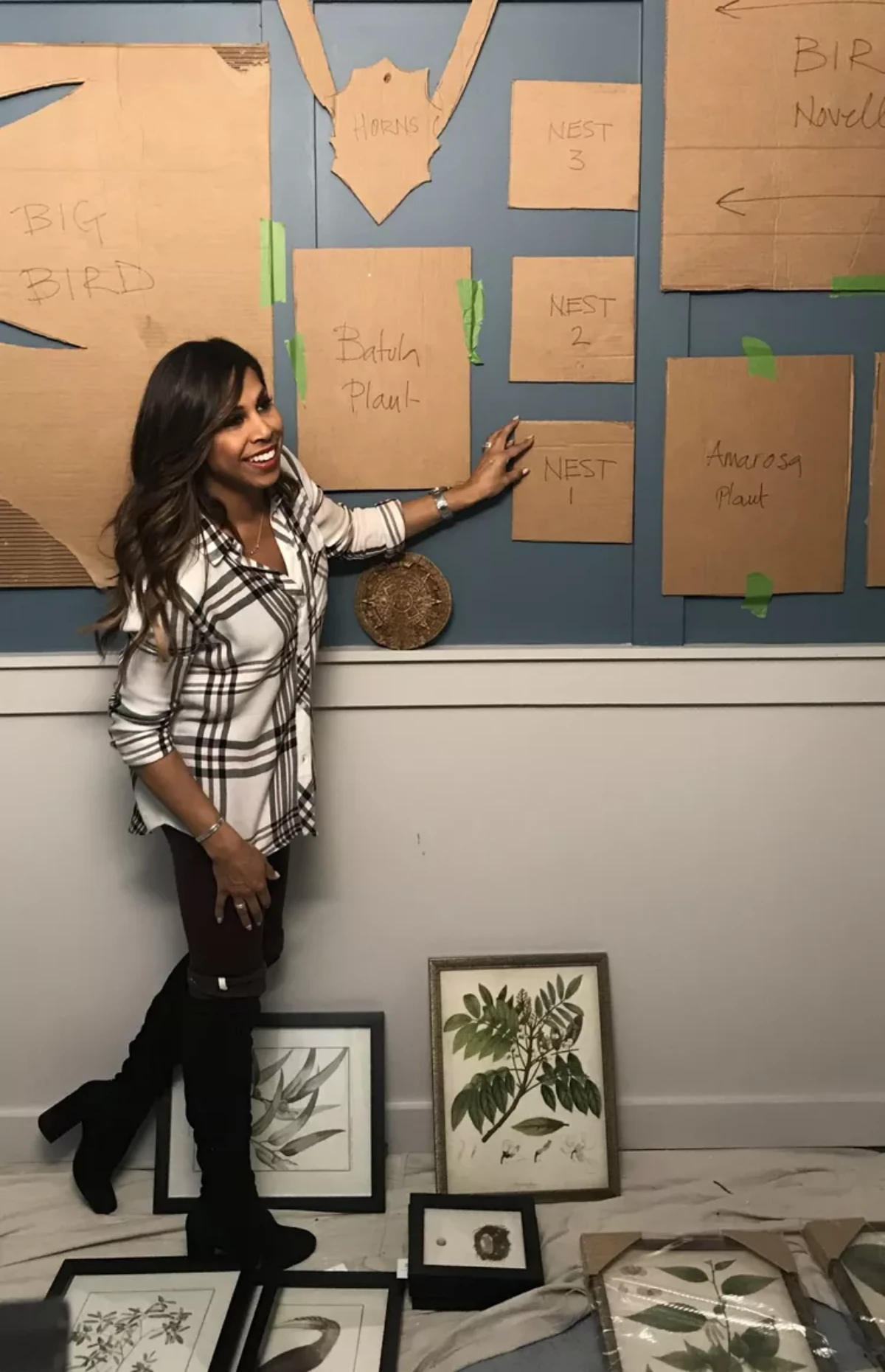
Let’s Compare Some Common Choices…
It can be tough to decide between different materials, so let’s break it down. (Heads up: Prices can vary wildly, but this gives you a general idea).
- Leather: It’s known for being durable and easy to wipe clean, which is great for spills. Over time, it develops a beautiful patina. However, it can be pricey, with a decent leather sofa starting around $2,500 and going way up. It can also feel cold in the winter and sticky in the summer.
- Performance Fabrics (like Crypton or Sunbrella): These are amazing for busy households. They’re engineered to be stain-resistant, water-repellent, and super durable. You can find them at most major furniture retailers like Crate & Barrel or Pottery Barn, and specialty fabric stores. A sofa in a good performance fabric often runs from $1,800 to $4,000. The feel has gotten much softer over the years, but it might not feel as plush as natural fibers.
- Natural Fibers (Cotton, Linen, Wool): These fabrics feel fantastic—they’re soft, breathable, and have a lovely texture. A quality cotton or linen sofa might cost between $1,500 and $3,500. The downside? They stain easily and can wrinkle or wear out faster in high-traffic spots unless they’re part of a blend.
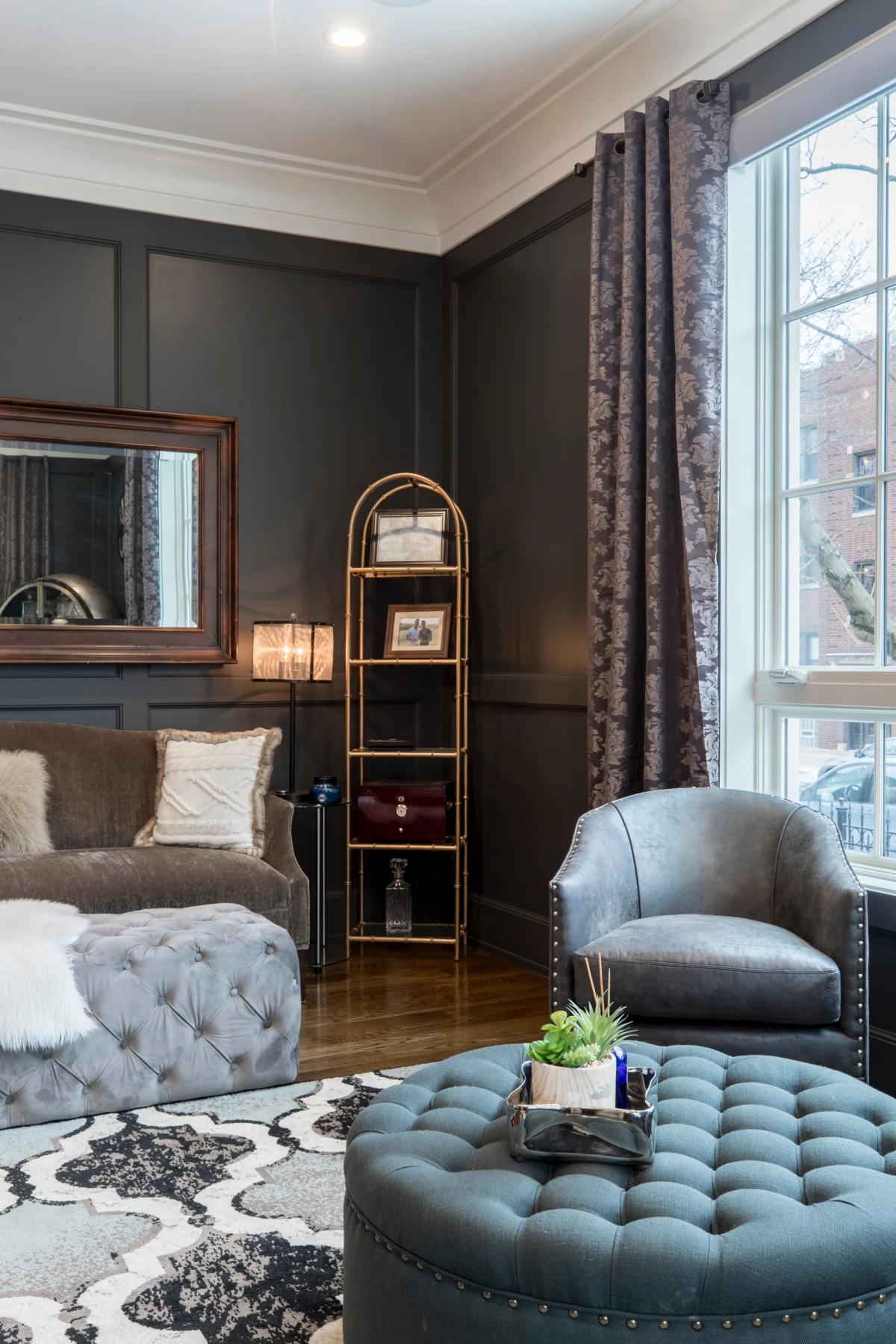
The Power of Texture
A room with only smooth, flat surfaces can feel sterile and uninviting. Texture is what gives a space warmth and visual weight. Think about layering different textures: a smooth leather sofa, a coarse wool throw blanket, soft velvet pillows, and a rough, natural wood coffee table. This mix of surfaces makes a room feel rich, complete, and so much more interesting. It even helps with sound, as soft textures absorb noise and make a room feel quieter and cozier.
4. Putting It All Together: Scale, Balance, and Light
Once your layout is set and you know your general aesthetic, it’s time to place things. This part is all about creating visual harmony. It’s a little bit of art and a little bit of geometry.
The Art Hanging Rule (and the Exception!)
One of the most common decorating mistakes is hanging art way too high. It makes the art feel like it’s floating away from the furniture. The standard gallery and museum rule is to hang art so the center of the piece is at average eye level, which is about 57 to 60 inches from the floor. This connects the art to the human scale of the room.
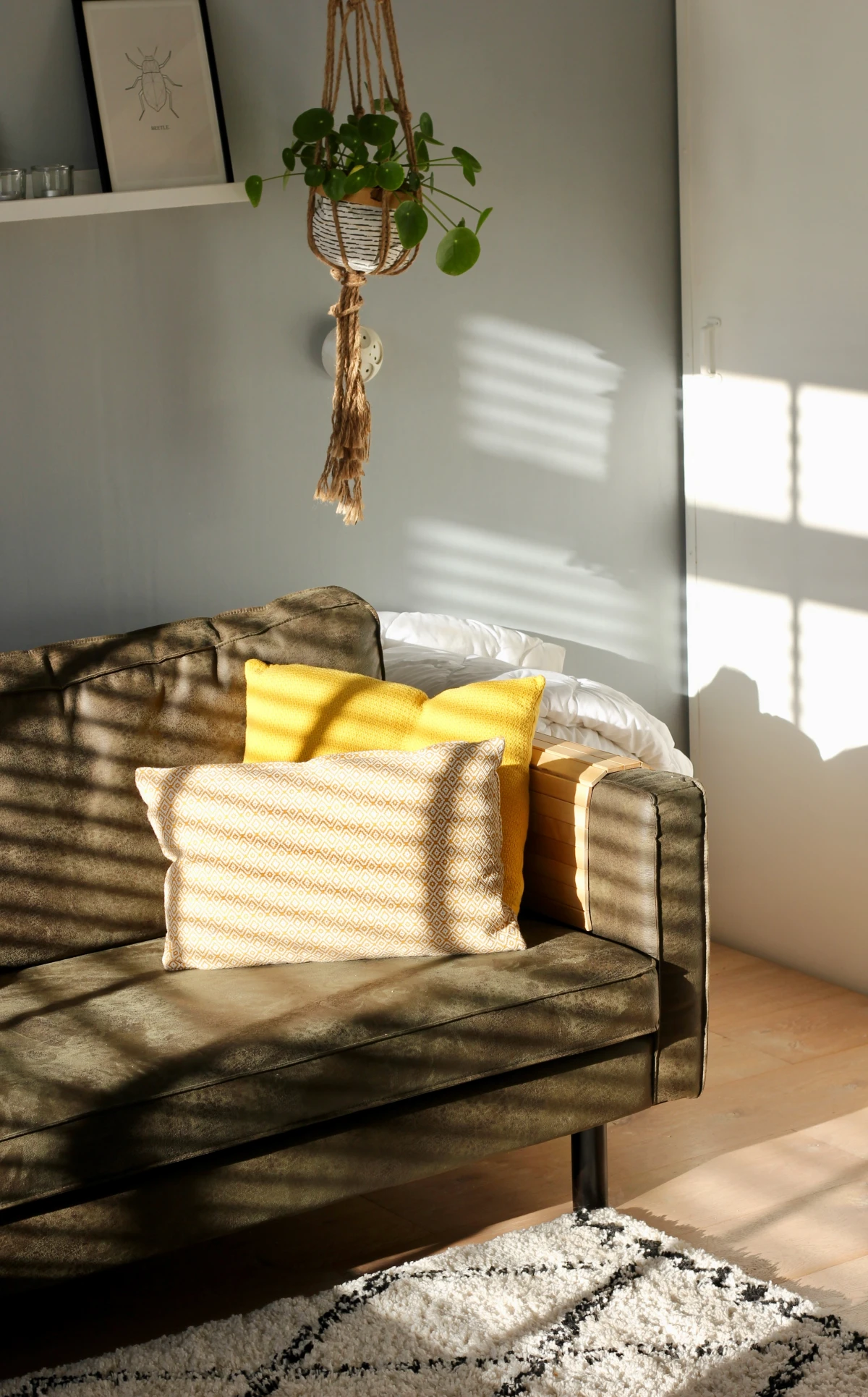
Quick tip: The rule changes when you’re hanging art above furniture like a sofa, console, or headboard. In that case, you want the bottom of the frame to be just 5-8 inches above the top of the furniture. This creates a cohesive grouping.
By the way, when you’re planning a gallery wall, don’t just start hammering. Here’s a foolproof method:
- Trace each of your frames onto kraft paper or cardboard and cut them out.
- Use painter’s tape to arrange these paper templates on your wall. You can move them around a million times with zero damage.
- Live with the layout for a day or two. Once you’re sure you love it, hammer your nail right through the paper template, then just tear the paper away. Perfect placement, every time.
The Importance of Leaving Things Out
Just as important as what you put into a room is what you leave out. That empty space—what designers call negative space—is a crucial part of the design. It gives your eyes a place to rest and allows your key pieces to really shine. A room jam-packed with stuff feels small and chaotic. Sometimes the most powerful move you can make is to leave a wall completely blank.
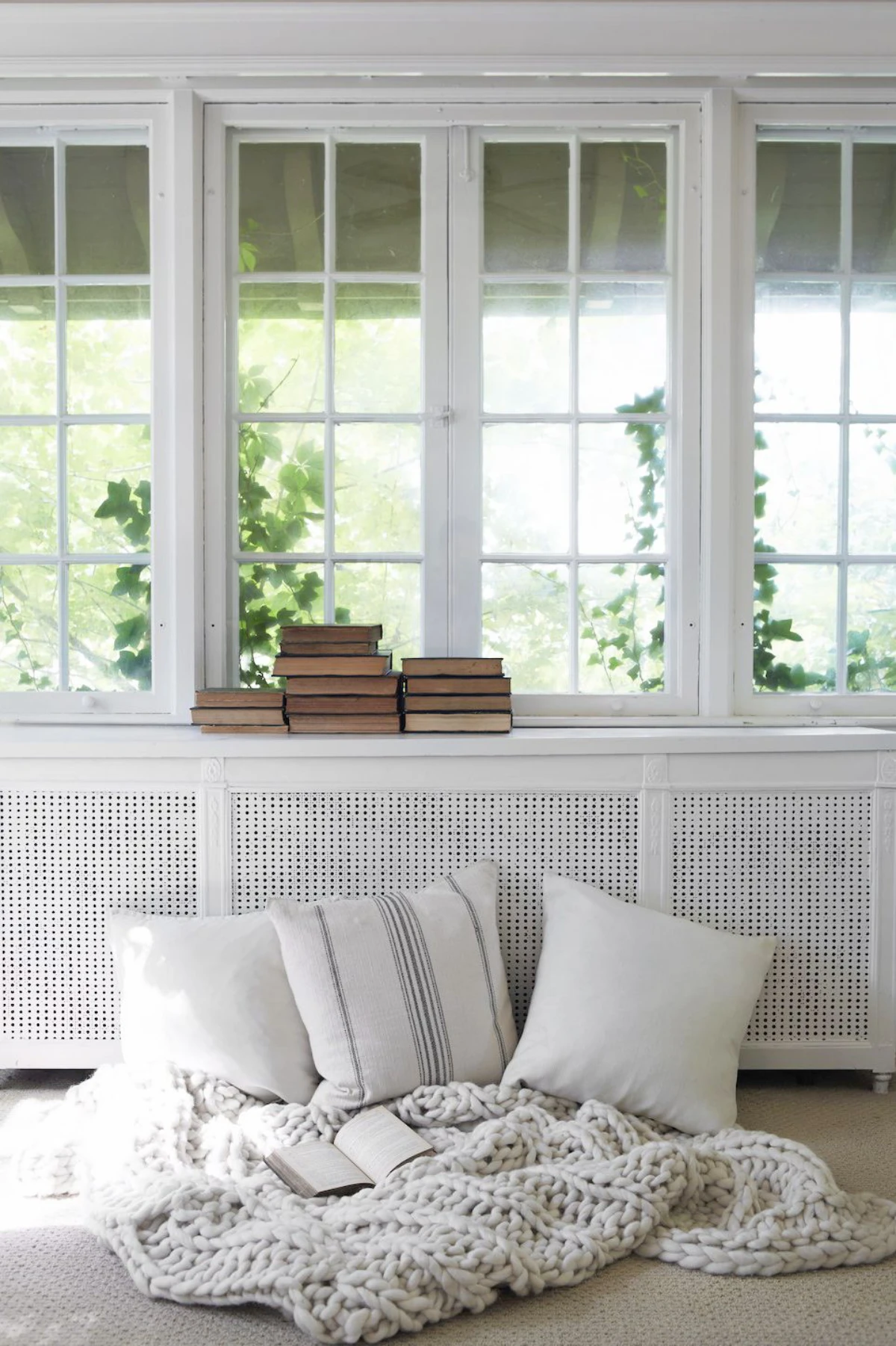
The Three Layers of Light
Lighting is everything. A single, harsh overhead light can kill the mood of the most beautiful room. Pros think about lighting in three distinct layers:
- Ambient Light: This is your room’s general, all-purpose illumination. It’s your ceiling fixture, recessed lights, or chandelier.
- Task Light: This is focused light for a specific purpose—a reading lamp by your favorite chair, under-cabinet lighting for chopping veggies, or a lamp on your desk.
- Accent Light: This is directional light used to highlight something special, like a piece of art, a cool plant, or an architectural feature.
PRO TIP: Install dimmers. Everywhere. It is the single most impactful, cost-effective upgrade you can make. A dimmer gives you complete control over the mood of a room, taking it from bright and functional to low and cozy in seconds. A good dimmer switch is only about $25 at any home improvement store, and it’s a total game-changer.
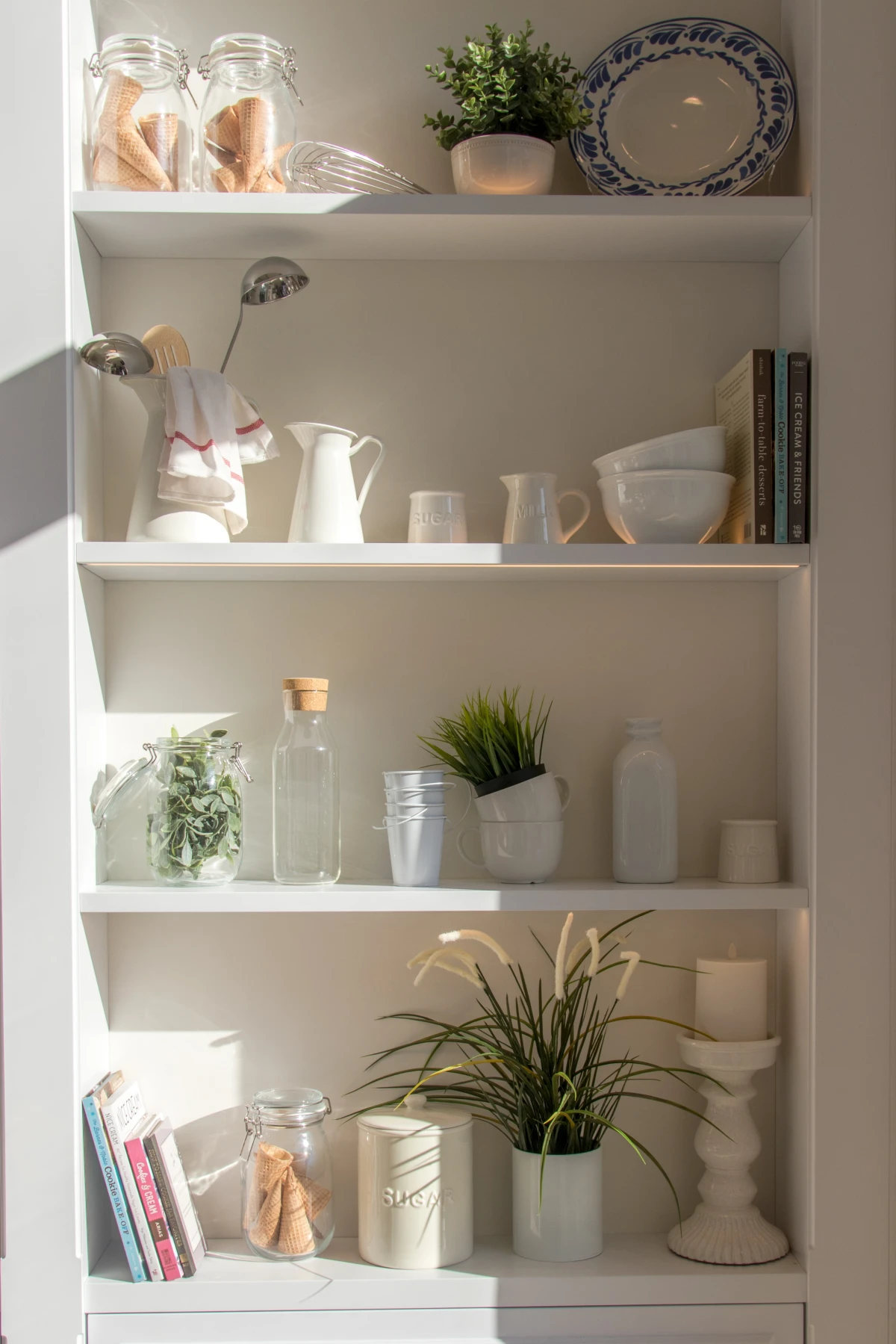
5. The Finishing Touches: Smart, Integrated Details
The final layer is all about solving those nagging practical problems with solutions that look intentional and elegant. This is where you hide the ugly stuff and dial in the details.
Hiding the Ugly Stuff
Every home has them: Wi-Fi routers, a nest of cords, clunky radiators, air vents. A pro doesn’t ignore these things; they plan for them. I’ve worked with carpenters to build gorgeous radiator covers that function as entryway consoles. For that mess of TV wires, we’ll have an electrician run a conduit inside the wall. For a router, a simple decorative basket with an open weave (for ventilation!) or a designated spot inside a cabinet works wonders.
A Quick Word on Safety and a Dose of Reality
When you start creating custom solutions or messing with the guts of your house, you have to think about safety and building codes. For example, any radiator cover needs proper ventilation to work safely and efficiently. And please, please, please, electrical work is not a DIY job for beginners. Hiring a licensed electrician to move an outlet or install a new light fixture might cost you between $150 and $350, but it’s an investment in your safety. I’ve seen the damage from faulty wiring, and it is not worth the risk.
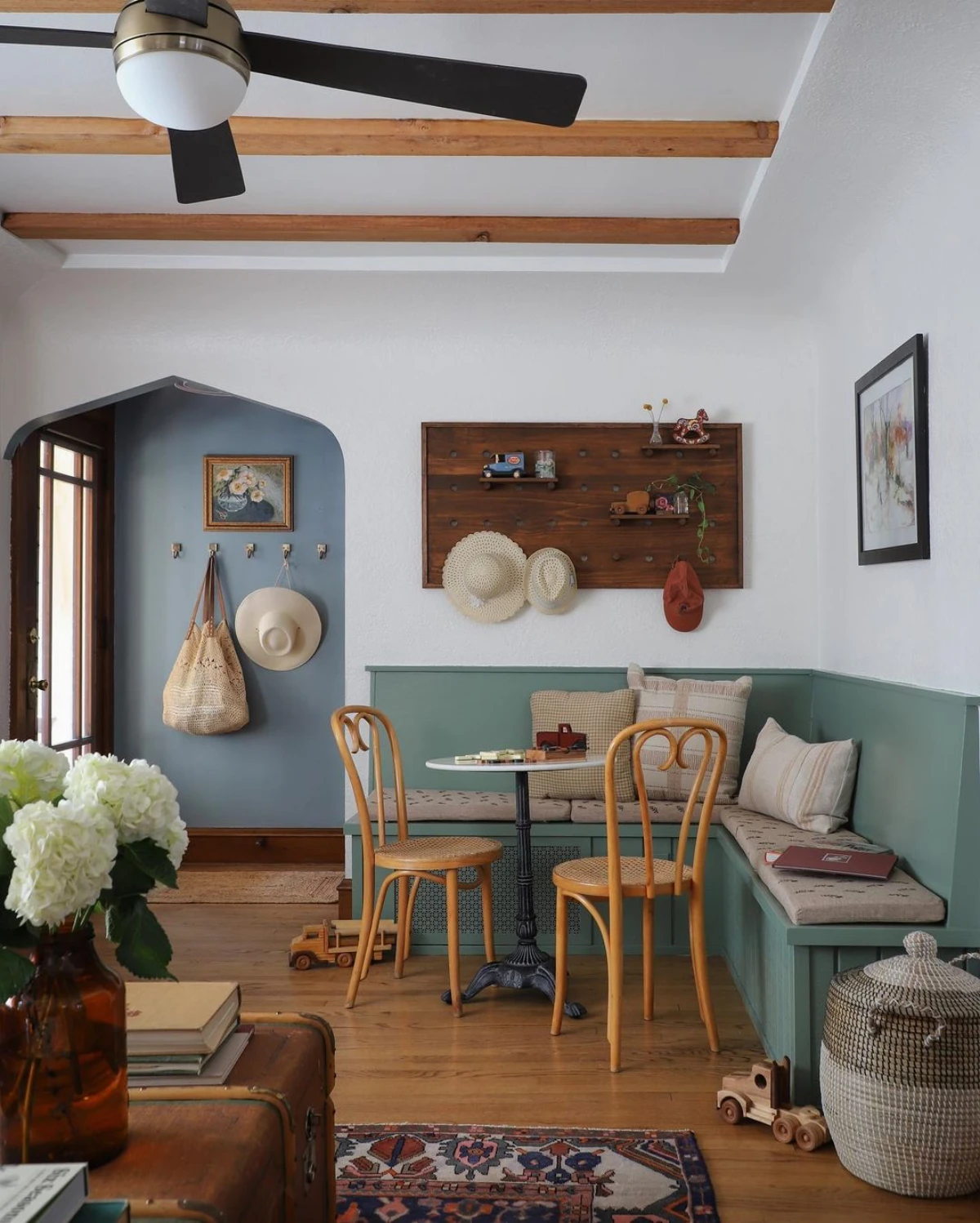
6. The Real-World Process: How to Tackle a Room in Phases
Good design is a marathon, not a sprint. It doesn’t happen in a weekend montage. Breaking it down into phases makes the whole thing feel manageable and leads to much better results.
- Phase 1: Planning & Discovery (1-4 weeks). This is where you do the thinking. Measure your room, draw a floor plan, gather inspiration, and set a realistic budget. Make your big decisions on paper first.
- Phase 2: Sourcing & Ordering (2-16+ weeks). Now you shop. But be warned: lead times for furniture can be long. Custom pieces can take months. Factor in potential delays from the start.
- Phase 3: Implementation (1-8 weeks). This is the ‘get your hands dirty’ phase: painting, construction, electrical work, and finally, furniture delivery and assembly. Try to have everything on-site before this phase begins to minimize the chaos.
- Phase 4: Styling & Refining (Ongoing). This is the fun part! Hanging art, placing plants, adding throws and pillows. And honestly, this phase never really ends. A good home grows and changes right along with you.
By following a process, you can make thoughtful choices instead of panicked ones. The goal isn’t to create a perfect, static showroom, but a home that will support and reflect your life for years to come.

Inspirational Gallery with Photos
A room’s mood is sculpted by light long before a single paint color is chosen. Professionals think in layers to create depth and functionality:
- Ambient: The overall illumination, your primary source, often from ceiling fixtures or recessed lighting.
- Task: Focused light for activities like reading or cooking. Think a beautiful floor lamp by the sofa or under-cabinet strips in the kitchen.
- Accent: The ‘jewelry’ of the room. This is light that highlights art, architectural features, or plants, creating drama and focal points.
A 2019 study published in the journal ‘Environmental Psychology’ found that even brief interactions with natural elements indoors can significantly reduce stress and improve cognitive function.
This is the science behind biophilic design. It’s more than just adding a ficus in the corner. It’s about consciously inviting nature in: orienting furniture to maximize a view, using natural materials like unpolished stone and warm woods, and choosing textiles with botanical patterns. It taps into our innate need to connect with the natural world, making a home feel like a true sanctuary.
The Oversized Sectional Trap: We see it constantly—a massive sofa dominating a modest living room. It blocks pathways, dwarfs other furniture, and makes the space feel cramped and unbalanced, no matter how comfortable it is.
The ‘Right-Sized’ Revelation: A thoughtfully chosen apartment sofa, like West Elm’s ‘Andes’ model, paired with one or two shapely armchairs, leaves room to breathe. This approach creates better flow, offers more flexible seating, and allows each piece to have its own presence.
The goal is to furnish the room you have, not the one you wish you had.
How do I get that high-end designer look without an unlimited budget?
It’s all about the high/low mix. The secret is to invest where it matters most: the pieces you physically interact with daily. Splurge on a high-quality sofa with a durable frame, a comfortable mattress, or ergonomic dining chairs. Then, save on the supporting cast. A side table from Target’s Studio McGee collection, a trendy vase from H&M Home, or pillows from a brand like Article can provide style and personality without breaking the bank.
- It makes a room feel instantly cozier and more inviting.
- It provides crucial visual interest, preventing a space from feeling flat.
- It can even help with acoustics by absorbing sound.
The secret? A rich tapestry of textures. Forget matching sets. True design depth comes from contrasting materials. Imagine the smoothness of a leather chair against the nubby texture of a boucle pillow, set on a natural jute rug from a brand like Ruggable, with sheer linen curtains filtering the light. This sensory layering is what makes a room feel complete.
Warning: Avoid the Sterile Showroom. A space that is too perfect, too coordinated, or too reliant on a single trend often feels impersonal and soulless. The most compelling homes are those that tell a story. Don’t be afraid to display your grandmother’s quirky vase, stack your well-loved books on the floor, or hang your kid’s art. These authentic touches are what transform a decorated house into a beloved home.
Overwhelmed by color choices? Use the designer’s classic 60-30-10 rule. It’s a simple formula for creating a balanced and cohesive palette.
- 60% Main Color: Your dominant shade, typically used for walls. Think a calming neutral like Benjamin Moore’s ‘Chantilly Lace’.
- 30% Secondary Color: For upholstery, curtains, or an accent wall. This color should support the main hue.
- 10% Accent Color: Your pops of personality. Use this for pillows, throws, art, and decorative objects.
Don’t just decorate your space; consider its scent-scape. Scent is a powerful, invisible layer of design that directly impacts how a room feels. Instead of a generic air freshener, be intentional. A high-quality diffuser from Vitruvi with citrus oil can energize a home office, while a sophisticated Diptyque candle with notes of fig or woodsmoke can add instant warmth and character to a living room. It’s the final, memorable touch.


